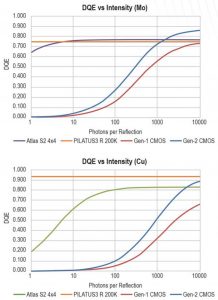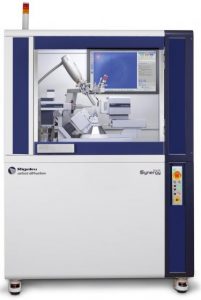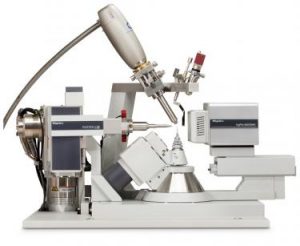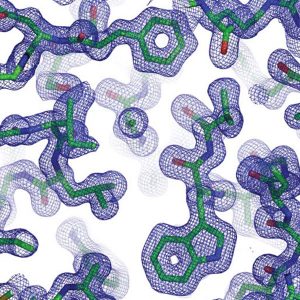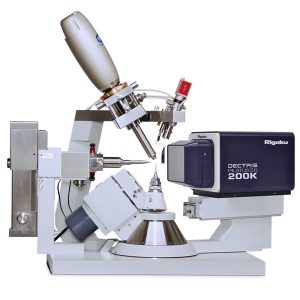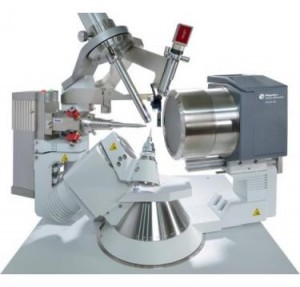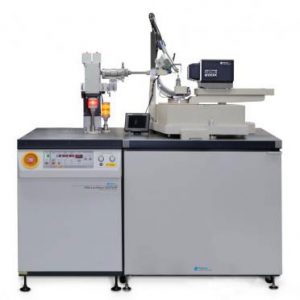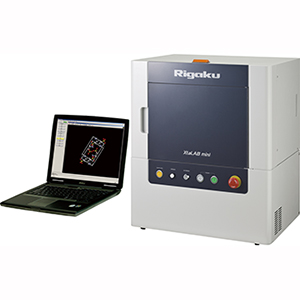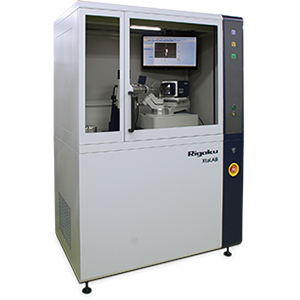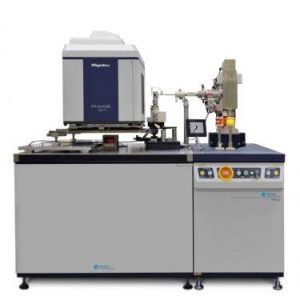XtaLAB Synergy-R – World’s Fastest Single Crystal Diffractometer
The Synergy-R is the most powerful and fastest single crystal diffractometer on the market. By marrying carefully selected high performance components including:
- High-flux, low maintenance microfocus rotating anode PhotonJet X-ray source
- High precision kappa goniometer
- Hybrid Photon Counting (HPC) HyPix 6000HE high speed, no noise detector
Key Features
Some of the features of the Synergy-R that will really benefit the user include:
- True shutterless data collection
- Noise-free HPC detector offering improved performance for weak data
- Rapid workflow compliments of the seamless integration between hardware and software
- High-speed, high-accuracy 4-circle kappa goniometer
- High-speed and high-flux components maximuise sample throughput
- Suited to even the most challenging of applications such as MOFs and incommensurate structures
- Unmatched levels of performance
- Compact design that easily integrated into your laboratory
High-Flux Anode
At the heart of the of the Synergy-R is the PhotonJet high flux X-ray source. It consists of a Micromax-007 HR rotating anode X-ray generator mated to a newly design optic. The Photonjet is available with either Cu of Mo anodes to suit your specific application.
Benefits of High Flux
The benefits of high flux are two-fold:
- It reduces data collection time, and hence increases ample throughput
- It enables you to measure smaller samples, reducing the minimum size crystal that you can study
Software
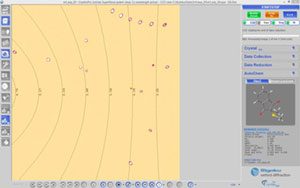 The high performance hardware components are married to a efficient strategy algorithm and highly parallelised control and processing software to ensure that everything works harmoniously and provides the optimal analytical power.
The high performance hardware components are married to a efficient strategy algorithm and highly parallelised control and processing software to ensure that everything works harmoniously and provides the optimal analytical power.
CrysAlis Pro is the user-inspired software package used for data collection and processing and common to small molecule and protein crystallography platforms. It features an easy-to-use graphic interface with the option to operate in fully automatic, semi-automatic and manual control modes.
At the heart of CrysAlis Pro are the automatic crystal screening, data collection and strategy modules. The software automatically calculates the optimal conditions for fast, high quality, complete data collection. While it is able to optimise experiments based on the specific crystal orientation and unit cell, you have have total control so you can optimise your strategy for a wide array of targets including multiplicity, time and resolution.
Furthermore data reduction and processing commence automatically when data is collected, while intelligent routines optimise parameters to produce the best quality data. Multi-core processing ensures that you receive results as quickly as possible regardless of the size of your data set.
Detectors
The Rigaku Oxford Diffraction Synergy-R is compatible with both Hybrid Photon Counting (HPC) and CCD detectors.
Hybrid Photon Counting (HPC) Detectors
HPC detectors (also known as Hybrid Pixel Array Detectors (HPAD)) are a type of hybrid detector as they contain both a silicon sensor and silicon electronics connected at each pixel by a bump bond. They have revolutionised data collection at beamlines through their high speed, high dynamic range and low noise. This latest generation technology is now available for you to use with homelab generators.
HPC detectors are also direct detection devices as they instantaneously convert each photon into electric charge in the sold state sensor. As such they do not generate any noise unlike other technologies. Each photon is counted and stored providing an accurate picture of the event you are monitoring.
A distinct advantage of this type of detector is that they are event driven. With no noise generation, they are especially suited to measuring weak reflections. Furthermore, they can also be used for true shutterless data collection due to their inherent fast read time and high dynamic range.
CCD Detectors
Rigaku Oxford Diffraction offer CCD detectors with variety of aperture sizes to suit your particular requirements. The line-up includes the extra-high sensitivity Eos S2 and the Titan S2 that boasts the largest active area monolithic detector on the market.
These detectors offer high sensitivity and excellent speed over a wide range of X-ray energies.
Instant binning control and software-controlled self-optimising sensitivity enable these detectors to collect data with a high dynamic range. S2 series detectors combine two images with different sensitivity settings automatically combined to give an effective dynamic range of 1:8,000,000.
Compared to CMOS Detectors
Both HPC and CCD detectors offer distinct performance benefits compared to CMOS detectors. CMOS detectors are also known as Charge-Integrating Pixel Array Detectors (CPADs), which are a type of integrating detector.
At weak reflections, CMOS detectors produce high intrinsic noise and generate a much lower DQE compared to both CCD and HPC detectors. This is the intensity range that is typically of interest for most diffraction experiments.
HPC detectors generate data with high DQE even at weak reflections thanks to their high gain. In comparison, the DQE of CCD detectors drops off at 10 photons or less, but is still significantly better than CMOS detectors which fall away rapidly for measurements involving <1% of the maximum intensity. This rapid drop in performance is due to the higher noise generated by the CMOS detector. Both read noise and dark current noise contribute to the overall noise.
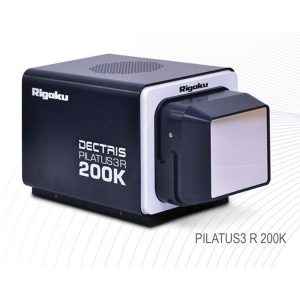
PILATUS3 R 200K HPC detector.
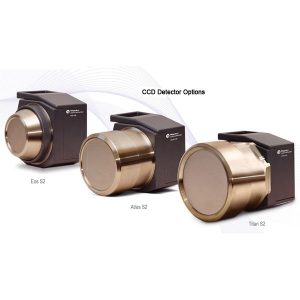
Eos S2, Atlas S2 and Titan S2 CCD detectors.
